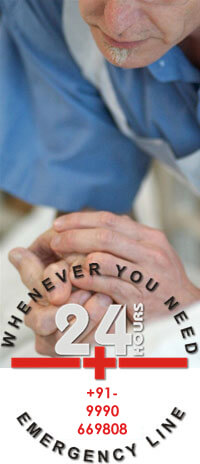Learn How to Perform CPR
CPR (Cardiopulmonary resuscitation) is an emergency procedure performed on a person who has stopped breathing or whose heart has stopped beating. It involves compressing the chest to circulate blood and deliver oxygen to vital organs.
Our body comprises different type of system each catering to the various need of our body. Circulatory system and respiratory system is one of them and are very vital for our survival. In CPR both of these plays an important role. When we breathe the air rich in oxygen reaches the lungs where hemoglobin present in RBC (red blood cells) binds itself with oxygen molecule and is transferred to different cells and organs by arteries and capillaries.
When someone suffers electrocution, severe trauma, fits, snake bite, severe nosebleed resulting in heavy blood loss and experience the cardiac arrest our heart changes its beating pattern and changes to ventricular fibrillation and stops beating altogether. This results in cessation or very little supply of oxygen to different parts of our body and kills the tissue and organ. By starting CPR we try to resuscitate (revive) the cardio (heart) pulmonary (lungs) function. It's not sure whether we can save the life of casualty but surely we can improve the chances by 40% if CPR is administered within 4 minutes of cardiac arrest and defibrillation is provided within 10 minutes.
Invented in 1960, CPR is a simple but effective procedure that allows almost anyone to sustain life in the first critical minutes of cardiac arrest. CPR provides oxygenated blood to the brain and the heart long enough to keep vital organs alive until emergency equipment arrives.
How Do Chest Compressions Actually Work?
Here are the steps involved in performing CPR:
- Check for responsiveness: Tap the person's shoulder and shout "Are you okay?" to see if they respond. If they don't, call for emergency services and start CPR immediately.
- Open the airway: Tilt the head back gently and lift the chin to open the airway.
- Check for breathing: Listen for sounds of breathing and look for chest movement. If there is no breathing, start rescue breathing.
- Begin chest compressions: Place the heel of one hand on the center of the person's chest, between the nipples. Place the other hand on top of the first hand and interlock your fingers. Press down firmly and smoothly, using your body weight to compress the chest about 2 inches deep.
- Deliver rescue breaths: Pinch the person's nose shut and make a seal around their mouth with your mouth. Blow air into their lungs until you see their chest rise. Remove your mouth and allow the person's chest to fall.
- Continue chest compressions and rescue breaths: Alternate 30 compressions with 2 rescue breaths, maintaining a rate of 100-120 compressions per minute.
- Keep performing CPR until emergency services arrive or the person starts breathing on their own.
To make learning CPR easier, a system was devised that makes remembering it as simple as
A-B-C:
CPR is a critical skill that can save lives. It is important to learn and practice it regularly to be prepared in case of an emergency. Let's begin by emphasizing the very first step of Basic Life Support


































